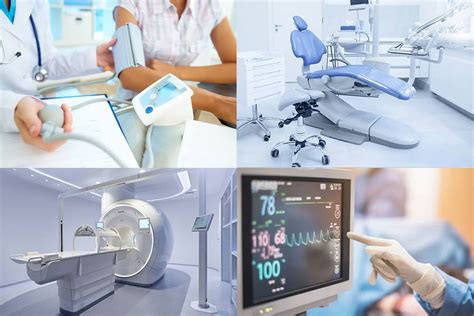Financing Medical Equipment: A Complete Guide
Purchasing medical equipment can be a significant financial undertaking for healthcare providers of all sizes. Understanding your financing options is crucial for making informed decisions that align with your budget and long-term goals. This comprehensive guide will walk you through the various financing avenues available, helping you navigate the complexities and secure the best solution for your needs.
Understanding Your Needs: The First Step
Before diving into financing options, it's essential to thoroughly assess your requirements. Consider the following:
- Type of Equipment: The cost varies dramatically depending on the complexity and functionality of the equipment. A simple blood pressure monitor will have a vastly different price tag than a sophisticated MRI machine.
- Budget: Determine how much you can realistically afford upfront and how much you're comfortable financing.
- Long-Term Costs: Factor in not only the initial purchase price but also maintenance, repairs, and potential upgrades.
- Payment Terms: Assess your preferred payment schedule, considering factors like interest rates and overall cost.
Exploring Financing Options: A Detailed Overview
Several financing options are available for medical equipment, each with its own set of advantages and disadvantages:
1. Bank Loans: Traditional bank loans offer a structured repayment plan, often with fixed interest rates. They're suitable for larger purchases and offer predictable monthly payments. However, securing approval can be a lengthy process, requiring a strong credit history and substantial collateral.
2. Leasing: Leasing allows you to use the equipment without owning it outright. This option typically involves lower upfront costs and may offer tax advantages. However, you'll have ongoing lease payments and won't own the equipment at the end of the lease term. Consider carefully the terms of the lease agreement, including renewal options and buyout clauses.
3. Vendor Financing: Many medical equipment manufacturers or distributors offer financing options directly to their customers. These plans can be attractive, but it’s important to compare them to other options to ensure you’re getting the best deal. Always review the terms and conditions carefully.
4. Equipment Financing Companies: Specialized companies focus solely on providing financing for medical equipment. These companies often offer flexible payment plans and may be more lenient with credit requirements than traditional banks. Research various providers to compare interest rates and terms.
5. Government Grants and Subsidies: Depending on your location and the type of equipment, government grants or subsidies might be available. These programs aim to support healthcare providers, often focusing on specific needs or underserved communities. Research local and federal funding opportunities to see if you qualify.
6. Capital Leases: A capital lease is essentially a loan disguised as a lease; at the end of the term, ownership is transferred to the lessee. While structured differently than a traditional loan, it offers the potential for tax benefits and is an excellent option for long-term needs.
Choosing the Right Financing Solution: Key Considerations
Selecting the optimal financing solution requires careful consideration of your specific circumstances. Here are some critical factors to evaluate:
- Interest Rates: Compare interest rates across different options to minimize your overall cost.
- Loan Terms: Consider the loan duration and repayment schedule to align with your cash flow.
- Fees and Charges: Be aware of any hidden fees or charges that might inflate the total cost.
- Credit Requirements: Understand the creditworthiness needed to qualify for different financing options.
Beyond Financing: Essential Steps for Success
Securing financing is only one piece of the puzzle. Consider these additional factors for a smooth and successful equipment acquisition:
- Due Diligence: Thoroughly research the equipment provider and ensure they have a strong reputation for quality and support.
- Maintenance Agreements: Investigate maintenance contracts to protect your investment and minimize unforeseen repair costs.
- Staff Training: Adequate staff training on the new equipment is essential to maximize its effectiveness and ensure safe operation.
By carefully assessing your needs, exploring available options, and following these essential steps, you can effectively finance medical equipment and enhance the quality of care you provide. Remember to consult with financial advisors to ensure you make the best decision for your practice’s long-term financial health.
